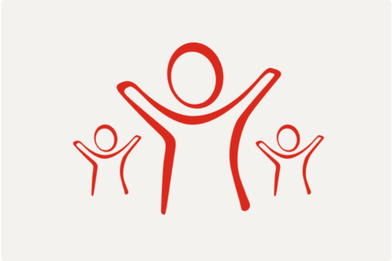BOLIVIA: Hottest winter on record ends in drought for more than half the country
LA PAZ, 28 September 2023 – A combination of intense winter heat fuelled by the climate crisis and the El Niño phenomenon has created a major drought emergency across Bolivia, said Save the Children.
Six out of the nine departments across Bolivia are in drought, with over 200,000 families particularly vulnerable to its impacts. More than 71 local municipalities – or 20% in the country - have been officially declared a disaster. The lack of water has led to increasing rates of disease in children, with many drinking stagnant water and catching water-borne illnesses[i], while many others are experiencing a disruption to their education, with the unusually high temperatures forcing some schools to change their opening hours to avoid the midday heat.
We stand side by side with children in the world's toughest places.
On Monday, Bolivia recorded its hottest ever September temperature of 40.3C[ii]. Temperatures are expected to reach as high as 45C in some parts of the country this week. By December, there is a “high probability” Bolivia’s iconic Lake Titicaca will be 64cm below the drought alert level, breaking a low water record set in 1998 by 33cm.
The child rights organisation called for increased funding to support communities affected by the drought, which has escalated into a major humanitarian crisis in Bolivia, as well as more urgent action to tackle the climate crisis globally.
The drought is also drying up fresh clean water sources for livestock and destroying crops, affecting the agricultural production of more than 10,200 hectares of farmland and risking the lives of over 130,000 heads of cattle, according to Bolivia’s Ministry of Defence.
Families living in the highland areas and indigenous communities are being particularly affected, with water flow to highland families in the Potosi region reduced by two thirds[iii]. Families who rely on the natural environment for their income - including pink trout farmers, camelid herders, and people in the tourist industry - have seen their livelihoods literally dry up around them.
Bolivia, along with other countries in South America, has been experiencing its warmest winter on record, thanks to a “heat dome”, which occurs when high pressure builds up over an area and stays there, trapping hot air, for an extended period.
Marianela Montes de Oca, Country Director for Save the Children in Bolivia, said: “The impact of the long, hot winter and now the start of this extremely hot dry Spring is unlike anything we have seen before. This heat is a danger to children, their families, animals and the land. I cannot remember the last time we had rain.
“This is doubtless in large part due to the El Niño phenomenon and indicates the serious havoc it can wreak on communities. But human-made climate change is pushing these temperatures up further. This is a perfect example of how the climate crisis is already with us now. In six of the country’s nine departments, families are without clean water, they are losing the land they rely on to survive, and children’s lives, rights and futures are under threat.
“These extreme temperatures are frightening for us all. It is supposed to be our coolest time of year – and it is 35, 40C outside. What does this mean for the land on which 12 million people live? How will our people feed themselves?”
Bolivia’s drought is understood be the a result of a combination of factors, including climate change, and natural phenomena like El Niño, which arrived unusually early this year. This is the second consecutive year of drought for the country – and increasing uncertainty is forcing families and children to migrate to cities, putting pressure on urban infrastructure and having a detrimental impact on children’s education and stability.
Save the Children is calling on world leaders, particularly from high-income countries and historical emitters, to take action on the climate crisis that includes increasing adaptation finance and providing funding for losses and damages through the provision of new and additional climate finance. Leaders must also place children and child-critical social services at the centre of their efforts. Governments must also recognise of children as key agents of change in addressing the climate crisis and work to urgently limit warming temperatures to 1.5C above pre-industrial levels.
Save the Children is also calling for increased funding to help communities prepare for the worst impacts of the El Niño phenomenon to better protect children’s lives.
In Bolivia, Save the Children is providing emergency support with cash, vouchers, and food aid to vulnerable communities affected by the drought and is monitoring the situation and assessing people’s medium-long term needs.
*******************************************************************************************************************
For further enquiries please contact:
- Emily Wight in London Emily.wight@savethechildren.org
- Maria Gabriela Alvarado in Panama Alvarado maria.alvarado@savethechildren.org
Our media out of hours (BST) contact is media@savethechildren.org.uk / +44(0)7831 650409
Please also check our Twitter account @Save_GlobalNews for news alerts, quotes, statements and location Vlogs.
[i] According to initial information from the Ministry of Education, 340 educational units in 21 municipalities were affected by the drought, mainly related to access to water and temporary migration for work.
[iii] According to the Autonomous Administration for Sanitary Works Potosí (AAPOS), water flow has been reduced from 180 litres per second down to 60 litres per second


.jpg-ch11029386.jpg/s56883b4bl3fg73wk7l823i0m5773g5j.jpg?g=top&w=392&h=261&format=webp&itok=ZTvODiIo)

